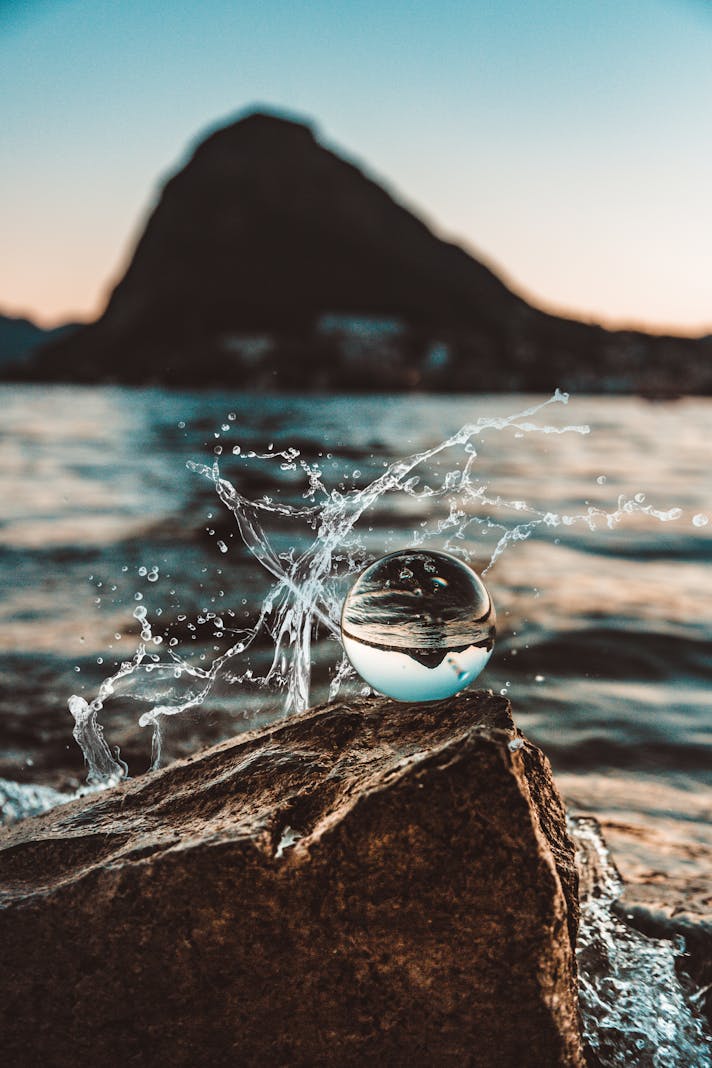California Sea Otters

You oughter see them! Jokes aside, the sea otter population along the California Coast is growing. This is great news for the state, as they are star attractions beloved by visitors to the Central Coast. In Monterey Bay and beyond, otters are often seen floating on their backs, using their bellies as kitchen tables. When not eating, they swim and play, delighting the viewer with their antics. Beyond the economic boost, however, this species is vitally important ecologically. The species Enhydra lutris nereis, as it is known to scientists, provides a vital service on behalf of the biome of the Central Coast and the health of the Pacific Ocean.
Sea otters are marine weasels – they are in fact the largest member of that family, weighing between thirty and one hundred pounds. Like their land cousins, otters rely on heavy fur for warmth rather than the layer of blubber found on other ocean mammals such as sea lions, seals, and whales. In order to maintain their body temperatures, otter pelts grow thick and luxurious, with almost double the number of individual hairs found on a human head. Unfortunately, this has made them attractive to the ultimate predator, mankind. Fur trading in the 17th through the 20th centuries almost completely wiped out the sea otter population.
Otters are entwined in a food net that begins with the kelp forest, which provides nourishment for sea urchins and other invertebrates. After feeding on these creatures, they are in turn consumed by sharks and whales. Because of this, California sea otters are generally not found south of Santa Barbara, where great white sharks become more common; their range at present extends northward to the area around San Francisco. It’s important to keep in mind that pulling one part of the web out can potentially cause the entire chain to collapse – sea otters perform a vital duty in keeping the Pacific Ocean healthy.
In 1938, less than 50 of these creatures remained on the California coast. Sustained conservation efforts and study have allowed the population to rebound, and today there are roughly three thousand of these adorable creatures to visit and photograph. However, they are not completely out of danger – because the population is so concentrated in a small area, their numbers can’t expand far beyond the present amount. Also, one large oil spill could make their ecosystem uninhabitable, resulting in mass die-offs. As stewards of the oceans, it’s important for Californians to remember this to farm for oil responsibly, away from important habitat. It’s also important that scientists continue to study these creatures so that their needs can be better understood.
Of course, it’s difficult to appreciate the need for scientific funding without personal knowledge of these creatures. Visitors to the Monterey area can watch them frolic off the coast and within the confines of Elkhorn Slough. A visit to the Monterey Bay Aquarium can provide a close-up look at these creatures and their environmental needs. If you’re interested in learning more about sea otters and the impact of offshore drilling on the marine sanctuaries of the Pacific coast, visit the Aquarium’s website for more information.
Disclaimer: I am not affiliated with the Monterey Bay Aquarium. As a Californian and a nature activist, I do donate money to the Aquarium and other charitable organizations representing the Pacific Ocean.
Sea otters are marine weasels – they are in fact the largest member of that family, weighing between thirty and one hundred pounds. Like their land cousins, otters rely on heavy fur for warmth rather than the layer of blubber found on other ocean mammals such as sea lions, seals, and whales. In order to maintain their body temperatures, otter pelts grow thick and luxurious, with almost double the number of individual hairs found on a human head. Unfortunately, this has made them attractive to the ultimate predator, mankind. Fur trading in the 17th through the 20th centuries almost completely wiped out the sea otter population.
Otters are entwined in a food net that begins with the kelp forest, which provides nourishment for sea urchins and other invertebrates. After feeding on these creatures, they are in turn consumed by sharks and whales. Because of this, California sea otters are generally not found south of Santa Barbara, where great white sharks become more common; their range at present extends northward to the area around San Francisco. It’s important to keep in mind that pulling one part of the web out can potentially cause the entire chain to collapse – sea otters perform a vital duty in keeping the Pacific Ocean healthy.
In 1938, less than 50 of these creatures remained on the California coast. Sustained conservation efforts and study have allowed the population to rebound, and today there are roughly three thousand of these adorable creatures to visit and photograph. However, they are not completely out of danger – because the population is so concentrated in a small area, their numbers can’t expand far beyond the present amount. Also, one large oil spill could make their ecosystem uninhabitable, resulting in mass die-offs. As stewards of the oceans, it’s important for Californians to remember this to farm for oil responsibly, away from important habitat. It’s also important that scientists continue to study these creatures so that their needs can be better understood.
Of course, it’s difficult to appreciate the need for scientific funding without personal knowledge of these creatures. Visitors to the Monterey area can watch them frolic off the coast and within the confines of Elkhorn Slough. A visit to the Monterey Bay Aquarium can provide a close-up look at these creatures and their environmental needs. If you’re interested in learning more about sea otters and the impact of offshore drilling on the marine sanctuaries of the Pacific coast, visit the Aquarium’s website for more information.
Disclaimer: I am not affiliated with the Monterey Bay Aquarium. As a Californian and a nature activist, I do donate money to the Aquarium and other charitable organizations representing the Pacific Ocean.
You Should Also Read:
Monterey and Environs

Related Articles
Editor's Picks Articles
Top Ten Articles
Previous Features
Site Map
Content copyright © 2023 by Korie Beth Brown, Ph.D. . All rights reserved.
This content was written by Korie Beth Brown, Ph.D. . If you wish to use this content in any manner, you need written permission. Contact Korie Beth Brown, Ph.D. for details.







